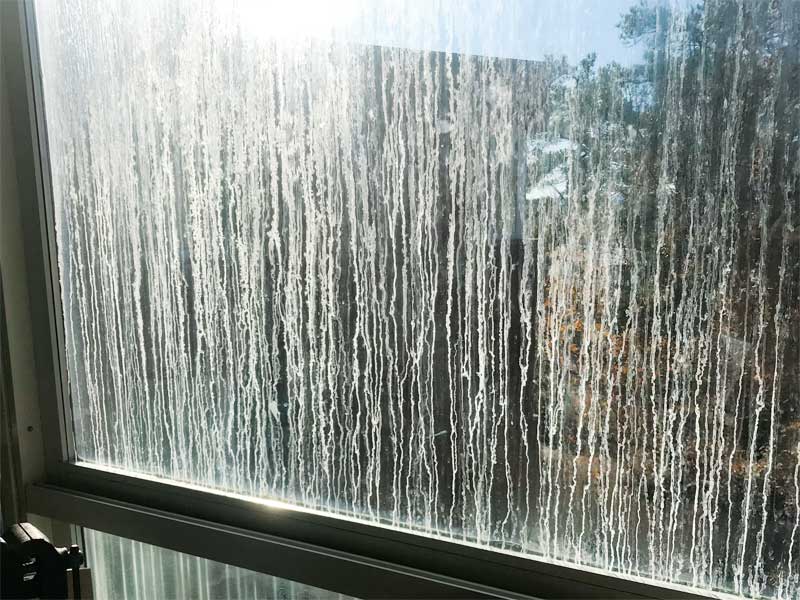

 FAILURES
FAILURES
Deborah Slaton, David S. Patterson, AIA, and Jeffrey N. Sutterlin, PE
Insulating glass units (IGUs) are often used in window and curtain wall assemblies due to their improved thermal performance as compared to assemblies with monolithic glass infill. However, monolithic glass can function for the life of the building (barring breakage), while IGUs can fail over time and become visually obscured, requiring replacement. This phenomenon, often referred to as ‘fogging,’ may necessitate replacement of IGUs one or more times during the useful life of the building.
IGUs are typically composed of two (or more) glass lites separated by a spacer bar at the perimeter, which creates an air space found between the lites; a continuous seal is provided along the edge of the unit. The edge seal (most commonly a dual seal) structurally bonds the unit together and prevents infiltration of water vapor or exfiltration of the air (or gas) between lites. Desiccant fill is commonly incorporated in the IGU spacer to absorb moisture within the air space and reduce the potential for condensation. Thermal performance of IGUs can be enhanced by filling the air space(s) with an inert gas (typically argon or krypton), using a thermally improved edge spacer (typically designed with less conductive materials such as stainless steel or with a more efficient cross-section incorporating thermal isolators), and/or applying low-emissivity (low-e) films.

Photo courtesy WJE
In dual seal assemblies, the primary seal located between the glass and spacer (typically polyisobutylene [PIB]) is intended to provide a gas- and vapor-impermeable seal between the air space and exterior. The secondary seal, typically silicone, is applied over the spacer between glass lites and is intended to bond the assembly together while protecting the primary seal from exposure to environmental factors. The service life of an IGU is critically dependent on the performance of these two seals.
Numerous factors, such as environmental conditions, building loads, the fabrication process, and the assembly within which the IGUs are confined, can significantly affect the service life of these units. Of these factors, long-term exposure of the edge seal to water is the predominant condition—a common occurrence when framing assemblies allow water to collect on the upper horizontal edge of the IGU (either by design, improper installation, or deteriorated seals), or sill members having inadequate drainage provisions—leading to premature IGU failure.
To better ensure against premature IGU failure, the Glass Association of America (GANA) recommends framing systems for captured IGU infill be designed with glazing pockets that quickly drain water from the system. IGU manufacturers also typically require these pockets as a warranty condition. Additionally, the Insulating Glass Manufacturers Alliance (IGMA) provides guidelines for the manufacture of IGUs to improve serviceability. Understanding the potential for premature failure of IGU assemblies and implementing measures to avoid it is essential to improving the service life of these products.
The opinions expressed in Failures are based on the authors’ experiences and do not necessarily reflect those of The Construction Specifier or CSI.
Deborah Slaton is an architectural conservator and principal with Wiss, Janney, Elstner Associates (WJE) in Northbrook, Illinois, specializing in historic preservation and materials conservation. She can be reached at dslaton@wje.com.
David S. Patterson, AIA, is an architect and senior principal with WJE’s office in Princeton, New Jersey. He specializes in investigation and repair of the building envelope. He can be reached at dpatterson@wje.com.
Jeffrey N. Sutterlin, PE, is an architectural engineer and senior associate with WJE’s Princeton office, specializing in investigation and repair of the building envelope. He can be reached at jsutterlin@wje.com.




